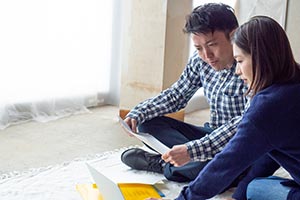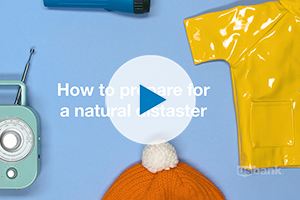This step-by-step checklist will help guide you on your road to financial recovery in the event of a tornado, hurricane, earthquake and other natural disasters.
From a young age, we’ve been taught physical responses to natural disasters. A tornado is coming? Seek shelter away from windows and doors. There’s a flood threat? Get to higher ground. Wildfires can’t be contained? Evacuate.
But what should you do about cash, bills and insurance claims in the wake of a natural disaster? This step-by-step checklist will help you take stock of and stabilize your finances after the storm passes.
Contact your insurance company
Start the claims process as soon as possible.
- Review your policy: Do you know what’s covered and what isn’t in the event of a natural disaster? Homeowners insurance typically doesn’t cover events such as flooding or earthquakes. Those separate policies cost an additional fee. Check your policy so you’re prepared to discuss it with your agent.
- Survey the damage: Start a list of all lost or damaged items. And don’t toss them until a claims adjuster visits your home. If you’re able to, submit receipts and photographic evidence to support your claim. Make copies for yourself.
- Save your receipts: Many purchases can be reimbursed. This list can include temporary housing, transportation, food and materials for repairs deemed “reasonable and necessary.” Reasonable and necessary repairs are those that will protect your home from further damage.
- Hold off on major repairs: Don’t invest too much money in paying contractors and vendors for repairs until the claims adjuster visits and addresses the damage.
Seek financial assistance
There are many resources available to help in the event of a natural disaster.
- Apply for federal aid: When the president makes a disaster declaration for your area, you could be eligible to receive financial assistance through the Federal Emergency Management Agency (FEMA). FEMA can provide housing and money to cover costs like replacing personal belongings, transportation, childcare, and medical and dental care. Submit an application at DisasterAssistance.gov.
- Reach out to the Red Cross: Find contact information for your local Red Cross. The nonprofit organization provides shelter, distributes meals and relief items and offers financial aid to victims of natural disasters.
- Consider a loan: Adding more debt to your finances may sound counterintuitive after a natural disaster. But if you still need help covering expenses after insurance and FEMA assistance, the Small Business Administration may be able to help. SBA offers low-interest loans specifically to help homeowners, renters and businesses recover after a declared disaster.
Take stock of cash flow, bills and debt
Take steps to preserve funds and minimize late payments.
- Have cash on hand: Many places are likely to be without power after a natural disaster. Keeping a small amount of cash on hand may be useful if you need to make some essential purchases.
- Turn off utilities: If your home is completely uninhabitable, notify your utility companies so they can disconnect service and you won’t be charged.
- Prioritize bills: Evaluate the amount you have in your emergency savings fund and compare it to your bills. This will help determine what you can and cannot cover. Insurance premiums and rent or mortgage payments should be your top priorities.
- Contact creditors and lenders: If you’re temporarily unable to pay any debt – such as car loan, mortgage, credit card or student loan – contact your creditors and lenders. Explain your situation, ideally before your next payment is due. Many will waive late fees or allow you to defer monthly payments for a period of time.
- Speak with a credit counselor: The days, weeks, even months after a natural disaster are an emotional time. Don’t make any big financial decisions before speaking with a nonprofit credit counselor. Examples include applying for a reverse mortgage, withdrawing money from a retirement fund, or filing for bankruptcy.
Protect yourself from fraud
Scam artists use natural disaster victims’ vulnerability to commit fraud.
- Familiarize yourself with fraud schemes: If you think someone is trying to scam you, check the FBI’s website, which maintains a list of common fraud schemes.
- Be cautious when dealing with your money: Whether donating money to others affected by a natural disaster or hiring a contractor to repair damage, do your due diligence. Double-check all professionals against the Better Business Bureau database.
- Trust your gut: Most importantly, if you feel uncomfortable with a service provider, simply say “no.”
When disaster happens, we're here to help. Keep your finances close and contact us if you need assistance to help ease your financial burden. U.S. Bank customers can download the U.S. Bank app or explore more ways we can help.





